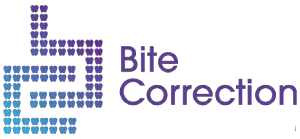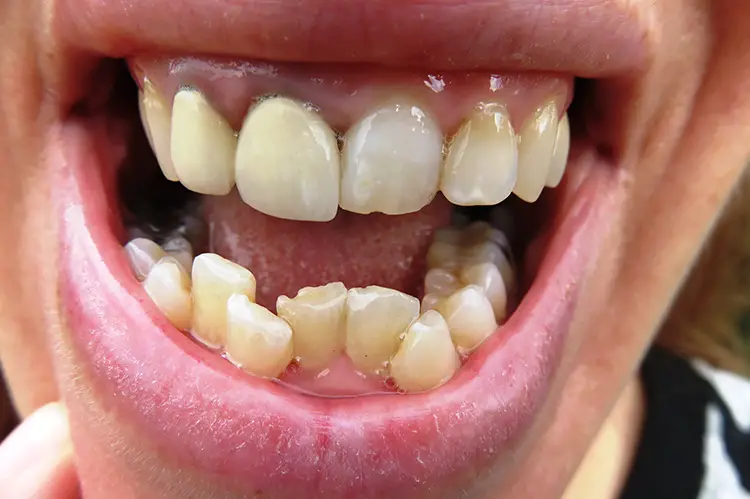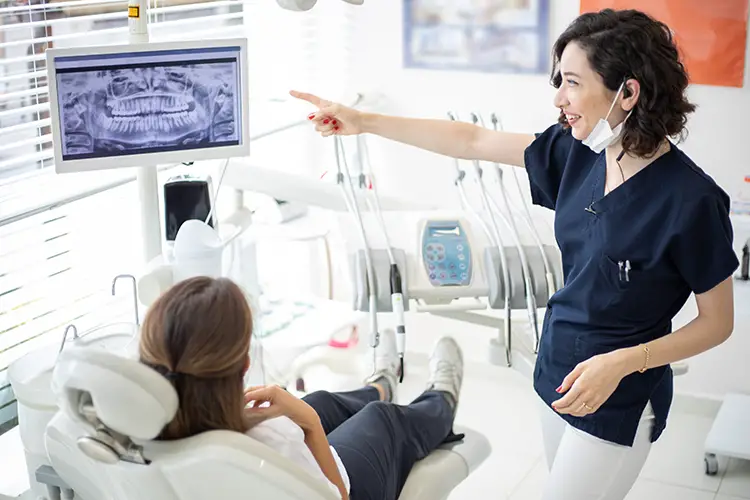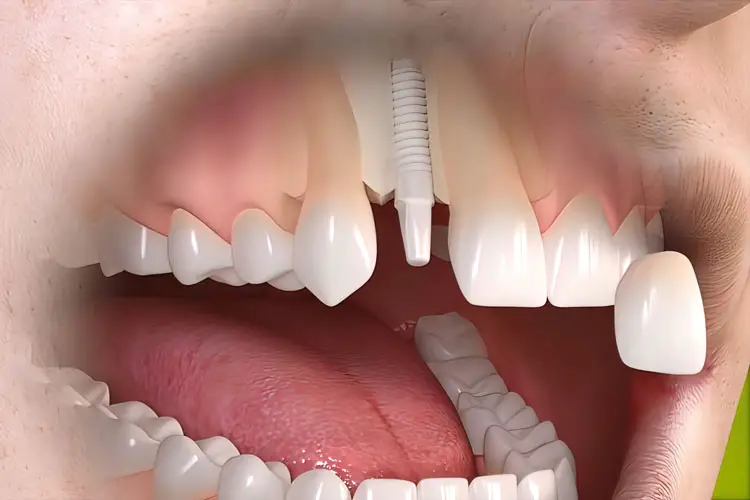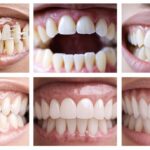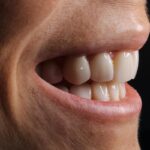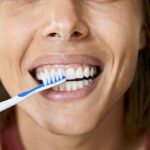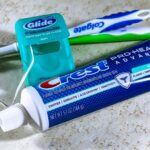Straightening your smile is more than aligning the teeth for aesthetics. When you are working with an orthodontic provider, a skilled doctor also evaluates your bite and jaw position. Ultimately, the goal is to create a smile that builds your confidence and also supports optimal movement and function of your mouth at the same time.
If you have a crossbite, then this alignment can be corrected with proper orthodontic services. This misalignment can negatively affect your jaw and lead to other dental complications, which is why it’s best to talk to an orthodontist about your condition.
What is a Crossbite?
The proper alignment of a bite means that the teeth on the upper jaw are positioned slightly above the lower teeth. When a person smiles, you can see a slight overlap of the front teeth covering the lower teeth.
When a person has a crossbite, the positioning of the teeth is reversed: upper teeth sit behind the lower arch when the mouth is closed. Most of the time, crossbites are hereditary. But there are also circumstantial conditions that can cause a crossbite, such as permanent teeth not having enough room to grow because the baby teeth haven’t fallen out yet. Childhood habits can also affect the alignment of the teeth, such as thumb sucking or excessive use of a pacifier.
Will a crossbite correct itself? No, orthodontic interventions are needed to reposition the teeth and jaw.
Types of Crossbites
The term “crossbite” is a general phrase to indicate this misalignment of the teeth. There are specific types of crossbites, categorized by the way the teeth come together when you bite:
- Anterior Crossbite: This type of malocclusion refers to the positioning of the upper front teeth and may affect the incisors and canines.
- Posterior Crossbite: This crossbite affects the back teeth, with the upper molars positioned inside the lower molars.
- Crossbite and Underbite: Also known as Pseudo Class III malocclusion (see also NCBI). The combination means that not only are the lower teeth positioned in front of the upper teeth, but they protrude past the upper front teeth.
- Crossbite and Open Bite: In addition to the lower teeth being positioned over the upper teeth, there is also a gap between the upper and lower teeth. An open bite often occurs when the teeth slant outward, causing the teeth not to touch when the mouth is closed.
- Crossbite with Jaw Misalignment: Also known as a crossbite with mandibular displacement. Often, jaw misalignment needs to be corrected when addressing teeth misalignment issues as well.
When you need to correct teeth and jaw misalignments, the orthodontist will identify current alignment issues that need to be fixed. Then, a personalized treatment plan can be designed to ensure optimal results for the future.
Watch for These Crossbite Symptoms
Regular dental appointments are essential for monitoring the positioning and health of your teeth and gums. Additionally, there are specific symptoms you might notice that indicate you have a crossbite:
- Facial asymmetry
- Grinding teeth
- Gum recession
- Midline shift
- Inability to speak properly
- Jaw pain
- Headaches
- The upper and lower teeth don’t touch when the mouth is closed
For an official diagnosis, talk to your dentist about the alignment of your teeth and jaw.
Why Correct a Crossbite?
What problems can a crossbite cause? Not only do crossbites affect the appearance of the smile and cosmetic issues, but misalignment can lead to a variety of other complications. Leaving a crossbite untreated can cause:
- Jaw grinding
- Cracked or chipped teeth
- Gum recession
- Tooth loss
- Jaw issues
- Headaches
- Improper jaw growth
- Tooth decay and gum disease
The good news is that all of these potential complications can be prevented with proper treatment. The best course of action is early intervention, although treatment options are available for people of all ages. Talk to a dentist or orthodontist for a complete evaluation and treatment recommendations.
Crossbite and TMJ: Can Crossbite Cause TMJ?
Do you have chronic jaw pain symptoms, teeth grinding, headaches, and/or jaw popping? Then you might have Temporomandibular Joint Dysfunction, commonly known as TMJ. In some cases, TMJ discomfort leads a person to talk to an orthodontist. If TMJ is associated with a crossbite, then treatment to correct the misalignment will also improve TMJ symptoms.
You don’t need to live with TMJ and other related symptoms. Chronic headaches and jaw pain can affect your eating habits and sleep, which is why it’s wise to talk to an orthodontist about potential treatment options for your condition.
Crossbite Treatment Options for Children
Early intervention in children can help to minimize a crossbite as the child’s teeth and jaw develop. Most industry experts agree that the best time for crossbite treatment is in the earlier years of life.
Beginning treatment at an early age allows the orthodontist to adjust alignment correction while the jaw is still growing. The goal is to steer the growth of the teeth and jaw to minimize complications in the future.
Ideally, crossbite correction should start before all of the permanent teeth erupt. These early treatments can help to prevent severe jaw issues and pain in adulthood.
Crossbite Treatment Options for Adults
Just because childhood treatments are missed doesn’t mean there are no treatment options to correct a crossbite. If you are an adult, then your dentist or orthodontist might recommend a personalized treatment plan, such as:
- Braces
- Palatal Expanders
- Invisalign
- At-home Clear Aligners
- Crossbite Surgery
You might need a combined approach using both expanders and braces or aligners. The expanders can help to increase the amount of space between the teeth. Then the braces or aligners move the teeth into the desired position.
Many adults with mild or moderate crossbites can benefit from braces or aligners. Sometimes, orthognathic surgery might need to be part of the treatment plan, depending on the position of the jaw.
Cost of Crossbite Correction
How much will you pay for the orthodontic services required for crossbite treatment? The specific costs vary depending on the severity of your condition and the types of treatments required. For example, minor crossbite issues can often be corrected using minimally-invasive treatments, such as a series of at-home aligners.
On the other hand, treatment costs get more expensive when surgery is required, or you need multiple types of treatments. It’s also important to note that early intervention treatments to prevent or correct the beginning signs of a crossbite are typically more affordable than intensive treatments for adults when the jaw and teeth are already formed in place.
You can’t put a price tag on the confidence that comes from a healthy, attractive smile. Crossbite treatments can boost self-confidence and help you avoid other expensive dental treatments in the future.
